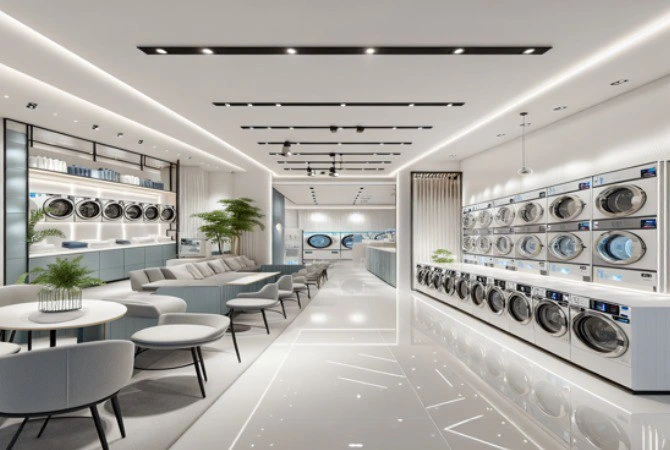Discover how WashClub NYC and Celsious transformed traditional laundromats into high-revenue, tech-driven and lifestyle-focused laundry businesses through innovation, branding, and customer experience upgrades.
Case Study 1: How WashClub NYC Transformed a Traditional Laundromat Into a Tech-Driven Delivery
Service
WashClub NYC, founded in 2010 in Brooklyn, began as a neighborhood laundromat business and evolved into a hybrid model offering both on-site laundromat services and tech-enabled delivery. Serving individuals and B2B clients such as hotels, gyms, and salons, it tapped into new laundromat business opportunities beyond its local area. With a focus on convenience, quality, and innovation, it shows how a laundry company can thrive in a competitive market.
Name: WashClub NYC
Location: Brooklyn, New York, USA
Type: Hybrid laundromat + on-demand laundry & dry-cleaning delivery
Founded: 2010
Scale: Serves both B2C and B2B (hotels, gyms, salons)
By 2010, many neighborhood laundromats in New York City faced the same operational and financial pressures. Margins from self-service washers and dryers were shrinking, competition was driving prices down, and customer loyalty was minimal. Location alone determined customer choice, while newer apartments with in-unit laundry further reduced walk-in traffic.
WashClub NYC responded by redefining itself as a technology-enabled laundry company with an expanded service model:
On-Demand Pickup & Delivery - Developed an app and web platform for 24-hour laundry pickup and delivery, expanding service beyond walking distance.
Subscription & Membership Models - Introduced weekly and monthly laundry plans for busy professionals and families, along with B2B contracts with gyms, spas, and short-term rental operators.
Branding & Customer Experience - Rebranded from a typical laundromat to a “laundry concierge” service, introducing eco-friendly detergents and a freshness guarantee.
Operational Upgrade - Invested in commercial-grade laundromat equipment and optimized delivery routes, partnering with local drivers to avoid high vehicle ownership costs.
The Results
Metric | Before Transformation | 2 Years After | Change |
Monthly Revenue | ~$18,000 | ~$55,000 | +205% |
Customer Retention (est.) | 20–25% | 65%+ | Major Lift |
Service Radius | ~0.5 miles | 5–7 miles | 10x expansion |
Share of Revenue From Delivery | 0% | ~70% | New Core Model |
Within two years, WashClub NYC achieved remarkable growth, more than tripling its monthly revenue and expanding its service area from half a mile to over seven miles—a tenfold increase. Customer retention climbed to more than 65%, a major improvement from its previous levels. By making on-demand delivery the centerpiece of its business, the company shifted its model entirely, with delivery services accounting for 70% of total income and establishing WashClub NYC as a leading tech-enabled laundry provider.

Traditional laundromats can increase profitability by moving into delivery, subscription, and B2B service models.
Technology, from mobile apps to route optimization, can turn a local utility into a scalable commercial laundry service.
Once delivery becomes the primary revenue stream, operational efficiency and branding matter more than physical location.
Partnering with hotels, gyms, and Airbnb hosts can provide a steady income and reduce seasonal fluctuations.
